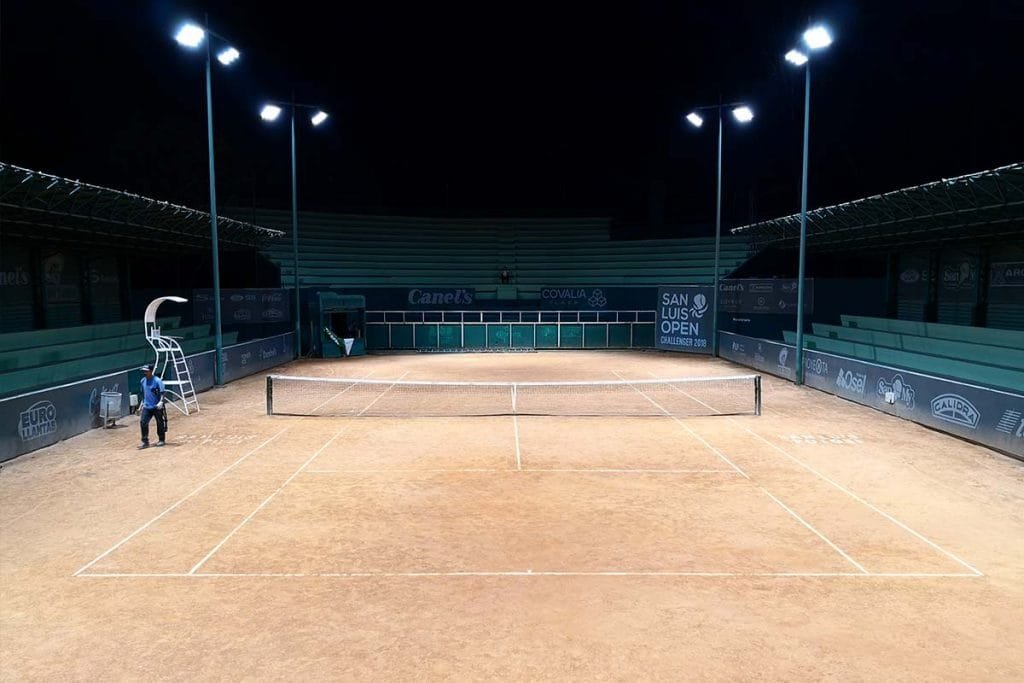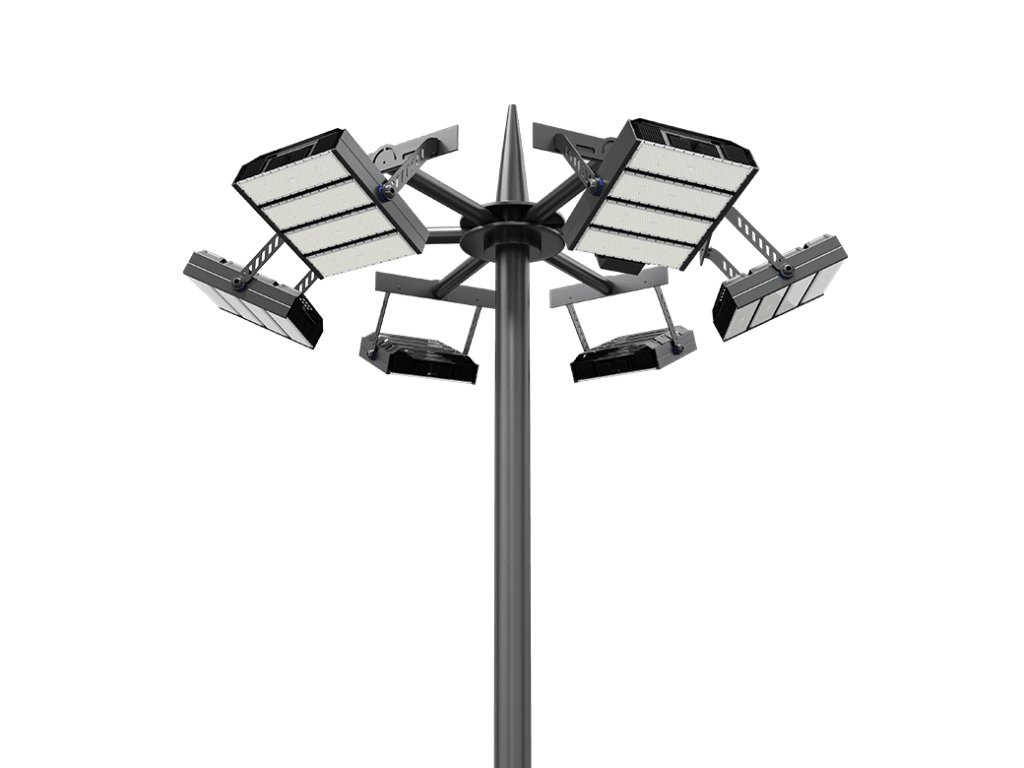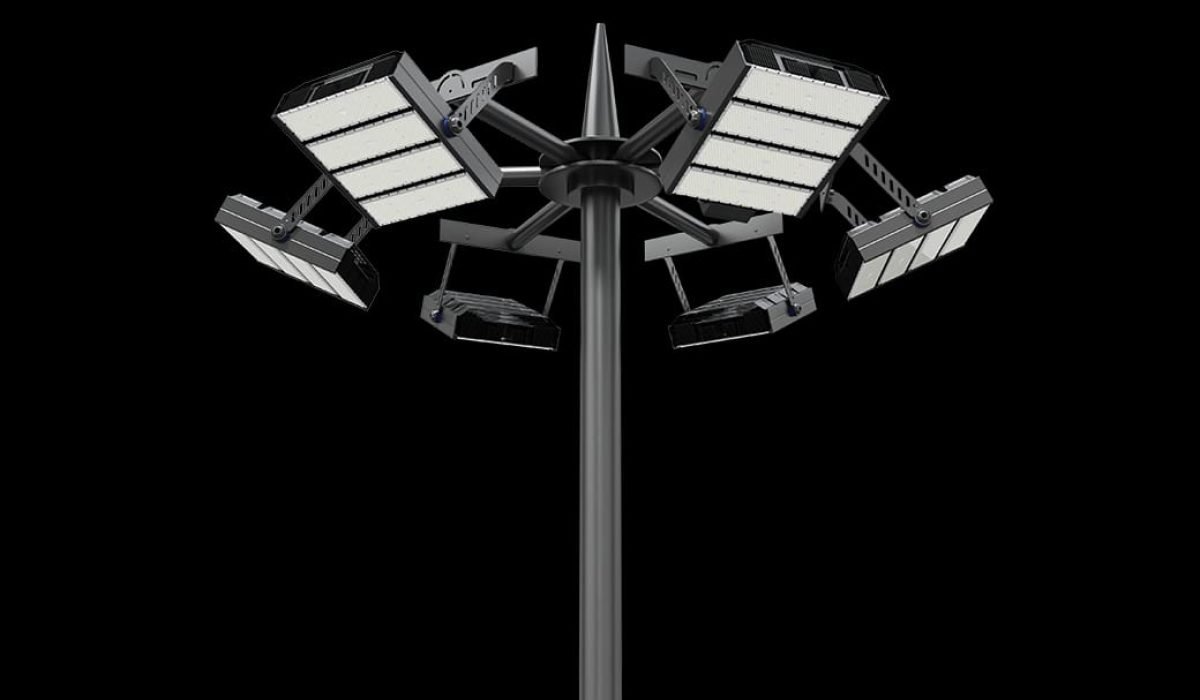Are you worried that your high mast lighting system won’t meet safety regulations or provide enough light coverage? Poorly designed lighting systems can lead to visibility issues, safety hazards, and costly non-compliance penalties. Meeting the correct standards for high mast lighting ensures optimal performance, safety, and long-term reliability for your large-scale projects.
High mast lighting standards cover pole height, wind resistance, light distribution, and maintenance systems. Following these standards ensures efficient illumination, structural safety, and reduced operating costs for highways, airports, and industrial zones.
Let’s break down the critical high mast lighting standards and show you how to meet them effectively for your projects.
1. The Pain Point: Why Standards for High Mast Lighting Matter
If you’re managing large-scale lighting projects like highways, ports, or stadiums, failure to meet lighting standards can result in:
- Poor illumination: Uneven lighting creates dark spots, compromising safety and visibility.
- Structural failures: Poles not designed for wind loads can collapse, causing safety hazards and expensive repairs.
- Non-compliance penalties: Ignoring standards can result in costly fines or project delays.
The bottom line: Poorly designed high mast systems don’t just cost money—they put public safety at risk. Meeting standards eliminates these issues, ensuring safe, efficient, and compliant lighting.

2. Pole Height Standards: How Tall Should High Mast Poles Be?
One of the most critical factors in high mast lighting design is pole height. Taller poles provide wider coverage, but they must be structurally sound to withstand environmental conditions.
Standard pole heights:
- Common applications: 20–35 meters (65–115 feet) for highways, large intersections, and parking lots.
- Maximum heights: Up to 50 meters (165 feet) for airports, seaports, and stadiums requiring vast area coverage.
Why it’s important for you:
Selecting the correct pole height ensures optimal light distribution with fewer poles, saving installation costs while meeting visibility and safety requirements. Taller poles must also comply with wind resistance standards to avoid failures.
3. Wind Resistance: Ensuring Structural Safety
High mast poles are exposed to harsh weather, especially in open areas with high wind speeds. Meeting wind load standards is critical for structural stability and long-term safety.
Key requirements include:
- Poles must comply with AASHTO wind load ratings or equivalent standards, ensuring stability under wind speeds of 120–150 km/h (75–95 mph) or higher in extreme regions.
- Material strength: Galvanized steel or aluminum poles are required for durability and corrosion resistance.
- Seismic safety: In earthquake-prone areas, poles must adhere to anti-vibration and seismic standards.
How it solves your problem:
Following wind resistance standards prevents pole collapses, protects lives, and reduces costly replacements, giving you peace of mind for high mast installations in challenging environments.

4. Light Distribution: Meeting Visibility and Safety Needs
High mast lighting must meet specific standards for illuminance and uniformity to provide safe and effective lighting for large spaces.
Key standards to follow:
- Illuminance levels: For highways, standards recommend 20–30 lux. For stadiums, airports, or ports, requirements can reach 300–500 lux depending on the task.
- Uniformity ratio: Achieve a uniformity ratio of 3:1 or better to eliminate dark spots and ensure consistent lighting.
- Fixture efficiency: Use energy-efficient LED lights with high lumen output to reduce energy consumption while meeting brightness requirements.
How it benefits you:
Meeting light distribution standards ensures safety for drivers, pedestrians, and workers. Proper lighting also reduces accidents, improves efficiency, and minimizes energy waste.
5. Maintenance Systems: Reducing Downtime and Costs
Maintaining high mast lighting systems, especially for poles over 30 meters, can be challenging. Standards require safe and efficient maintenance solutions to minimize downtime and costs.
Key features to look for:
- Lowering mechanisms: Poles should include motorized or manual systems to bring the light fixtures down for easy ground-level servicing.
- Durable fixtures: Choose weather-resistant and energy-efficient lights like LEDs to reduce maintenance frequency.
- Inspection schedules: Follow guidelines for periodic inspections to assess wind load resistance and fixture functionality.
How it helps you:
A well-designed maintenance system saves you time and money while ensuring continuous, reliable lighting performance, even in hard-to-access areas.
6. Environmental and Energy Efficiency Standards
Modern high mast lighting must not only meet performance standards but also align with environmental and energy efficiency goals.
Key requirements include:
- Energy-efficient lighting: LED fixtures reduce energy consumption by up to 70% compared to traditional lights.
- Light pollution control: Standards require proper shielding and beam angles to minimize light pollution.
- Sustainability: Poles made from recyclable materials, such as aluminum or galvanized steel, align with eco-friendly practices.
Why it matters for you:
By meeting energy and environmental standards, you reduce operational costs, minimize your carbon footprint, and future-proof your lighting project against rising energy regulations.

7. Application-Specific Standards for High Mast Lighting
Different applications have unique requirements for high mast lighting systems.
Key examples:
- Highways and intersections: Must comply with road safety standards for illuminance and uniformity to ensure driver safety.
- Ports and airports: Require maximum pole heights (40–50 meters) to provide clear visibility across large open spaces.
- Sports stadiums: Need precise, glare-free lighting to meet broadcast and player visibility requirements.
How it helps you:
By understanding and following application-specific standards, you can tailor your high mast lighting to meet the exact needs of your project, ensuring safety, efficiency, and compliance.
Conclusion:
Meeting the standards for high mast lighting is essential to ensure safety, efficiency, and long-term durability. By adhering to guidelines for pole height, wind resistance, light distribution, and maintenance systems, you can avoid safety hazards, reduce costs, and achieve superior lighting performance for large-scale projects. Whether you’re lighting highways, ports, or stadiums, following these standards guarantees reliable results, minimal downtime, and compliance with industry requirements.


